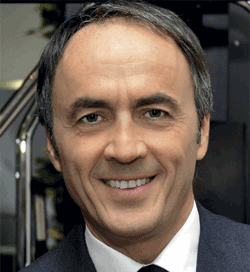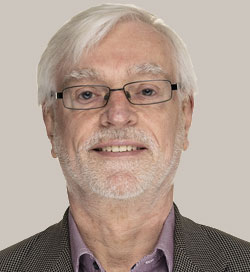With a background in allopathic medicine, the chief wellness officer of the Cleveland Clinic has spent his working life to date championing and proving the value of exercise and healthy living to long-term wellbeing. He talks prevention with Jane Kitchen
Tell us about your journey from the world of allopathic medicine to the world of prevention. What have been the ah-ha! moments?
When I started out, I wanted to run an intensive care unit, so focused on internal medicine and anaesthesia.
By 1979, I was asked to co-run the cardiovascular anaesthesia section at the University of California San Francisco and I soon realised surgeons were difficult to deal with but cared deeply about their patients’ outcomes and about them returning to normal function as soon as possible.
When I looked at the data, I saw the most important factor for reducing complications was the patient’s age. Ten years made a three-fold difference to survival rates – regardless of the surgical team. I started to study how we could change the physiological age of people to make them 10 years younger in the period surrounding their surgery.
In learning how to do this, I figured we could make surgical outcomes significantly better by helping them get healthier before surgery. We focused on managing their blood pressure, getting them to eat a healthy diet and doing physical activities such as walking.
These were simple changes people could easily do on their own, but most people still don’t do them. So the next step was figuring out how to motivate people, and that’s when I started working on my book RealAge (www.hcmmag.com/RealAge), which helps show people how you can change your physiological age with some simple lifestyle adjustments.
By 1993, I started to spread the word through a series of additional books, and we’ve now developed RealAge into an app that’s been downloaded by 72 million people worldwide.
You’ve led many significant improvements to the health system, what further changes are on your to-do list?
There will very likely be a major change in longevity in the coming decade and this is one of the things I’m focusing on now. ‘Longevity is the next disruptor’ is my new trademark – and passion – we need to help people understand what’s very likely to happen.
Medicine and public health have expanded the average lifespan – through sanitisation and immunisation initially, then by management of chronic diseases with things such as stents – by about 2.5 years every ten years since 1890.
We think, based on the research out there, that there’s an 80 per cent chance that by 2035, there’ll be a great age reboot. I’ve told people in the past that 60 can be the new 40, but in the near future, you could be 90 and have a physiological age of 40.
I’m working on an app to help people understand this and to show them how the choices they make now can impact their future.
The most important thing to learn is how to manage stress – stress ages you in every system, from the cardiovascular system to the brain.
Are the worlds of medicine and wellness aligned and if not, what can be done to bridge the gap?
They can be well-aligned, and that’s what the Cleveland Clinic did by starting a wellness institute, to be sure that at least in our system they’re aligned.
Clearly, the health and fitness and spa and wellness industries have a major role to play in teaching people how to manage stress, and they’re doing a wonderful job of that in some aspects.
A lot of things that start in the wellness space take a while to make their way into mainstream western medicine – mindfulness, or using nutrition to change cardiovascular health, for instance.
Getting well-done studies to back these things up is necessary, but requires pioneers in wellness to drive progress.
What do you say to critics of your stance on exercise and healthy living?
If you don’t have critics, you’re not far enough advanced! I don’t think anyone now doubts that 60 can be the new 40, but in 2004 I had a lot of critics when I said that.
I’m now saying that by 2035, 90 is likely to be the new 40, and there are plenty of people who think that’s crazy. But there will be a lot of people living younger for longer. Already we’re seeing the beginnings of this, where through advances such as CRISPR, we’re able to edit out the genes that cause sickle cell disease, for example.
Longevity will not just be ‘the next disruptor’, it will be the biggest disruptor – it will give us life itself.
What do you view as your greatest achievement so far in life?
I’ve driven a lot of innovations in life, from being one of the first to use echocardiography in humans, to advances in pre-op testing. But my work with RealAge and getting people to understand how much power they have over their own health – that each person is really the greatest genetic engineer for their own bodies – is by far my greatest accomplishment to date.
What role can health and fitness and spa and wellness operators play in supporting people to make improvements to their own wellbeing?
So far, these services have appealed to the middle and upper-middle classes – and the wealthy. We must figure out how to make them available to all.
We need a more mass-market approach with McDonald’s-style pricing and McDonald’s-style reach to make spa and wellness affordable and accessible for everyone. There’s also a major role for these industries in continuing to lead. It was these industries that got us to change our emphasis on stress management, for example, and that brought mindfulness to the forefront. It also brought healthy eating and physical activity for all into common practice.
These industries need to keep pushing to bring new wellness ideas to the forefront, and pushing for more scientific studies. They’ve had a huge impact on people’s wellbeing to date and can continue to do so in the future.
























































